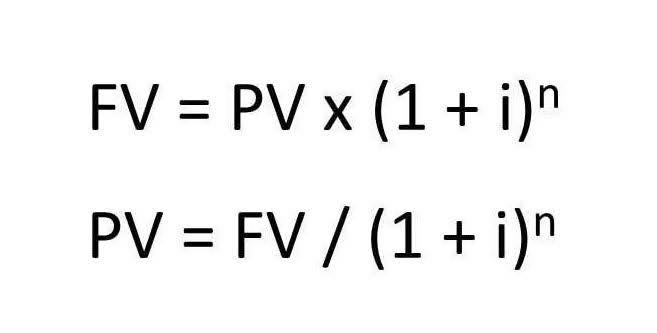
Before project completion, this method usually has no useful information to the reader, especially on the financial statements. The main advantage of EPCM is that income is reported over the life of the contract and any losses will be recognized based on the percentage of the contract completed, called the completion factor. The completion factor is the amount of work that has been completed compared to the estimated amount remaining. The completion factor must be certified by an engineer or an architect, or supported by appropriate documentation. The contract price must include cost reimbursements, all agreed changes to the contract, and any retainages receivable.
Overbilling occurs when a contractor bills for contracted labor and materials prior to that work actually being completed. Construction companies have to make difficult choices among many financial alternatives, like bidding on one project over another, selecting financing for materials or equipment, or setting a project’s profit margin…. Underbilling is the opposite scenario, when the amount https://www.bookstime.com/ billed to date is less than the recognized revenue. A Schedule of Values is an essential tool used in construction project accounting that represents a start-to-finish list of work… Upgrading to a paid membership gives you access to our extensive collection of plug-and-play Templates designed to power your performance—as well as CFI’s full course catalog and accredited Certification Programs.
Percentage of Completion vs. Completed Contract: An Overview
Accounting for income and expenses can present a real challenge for contractors, especially on long-term projects. The percentage of completion method is one of the most common methods of accounting used in construction. In this article, we’ll explain the percentage of completion method, how it works, and give you some real-life examples. Other types of construction contracts qualify for the completed contract method if they satisfy the general CCM requirements. For longer-term projects in which revenue and expenses might be earned and paid out at various intervals throughout the project’s lifetime, companies can use the percentage of completion accounting method.
The percentage of completion accounting method helps to protect companies from fluctuations in their revenue stream by recording revenue at regular intervals. However, Z must make a positive AMT adjustment for the difference between its regular taxable income, which is zero, and AMTI based on the percentage-of-completion method, which is $100,000 ($500,000 minus $400,000) for the long-term contract. Accrual accounting is typically the most common method used by businesses, such as large corporations. However, some small businesses use the cash method, which is also called cash-basis accounting. The completed contract method does not require the recording of revenue and expenses on an accrued basis.
Completed Contract Method and ASC 606
The completed contract method of accounting is the practice of deferring all revenue, expenses, and gross profits until the completion or substantial completion of the project. This is a more straightforward and conservative approach than other accounting methods. It will still yield the same results as the commonly used percentage of completion method, except that revenue recognition comes at the end of the project.
- Some companies prefer the cash method of accounting for revenue and expenses.
- The important thing to remember is that contractors must be consistent in how they calculate the percent complete.
- Therefore, if the project is deemed to be 40% complete, the business would report 40% of the $4 million project revenue ($4 million x 0.4).
- A contract is assumed to be complete when the remaining costs and risks are insignificant.
- The punishment can be the application of the 20% accuracy-related penalty under Sec. 6662(a) in the year of omission.
- Other types of construction contracts qualify for the completed contract method if they satisfy the general CCM requirements.
There’s no more Jones Realty to take control of the performance obligation — or to pay them! Avoiding “phantom revenue” from this situation is one reason why it’s good they don’t record their collections as income right away. In this case, however, Build-It should be able to finish the property and turn it over to another buyer. And this demonstrates another reason why point-in-time recognition may be appropriate for them to use. Once they do, their costs and income will shift from the balance sheet to their income statement. The completed contract method allows all revenue and expense recognition to be deferred until the completion of a contract.
Percentage of Completion Method
Because income recognition is based on a percent of the revised contract for each project, it’s important that contractors enter change orders into the system as soon as they are approved. Instead of costs, percentage of completion can also be calculated using units or labor hours, depending on the nature of the business. The important thing to remember is that contractors must be consistent in how they calculate the percent complete. Since contractors often work on several contracts simultaneously and because contractors often incur costs that are not specific to a particular contract, these costs must be accumulated and allocated to specific contracts. Although the contractor has discretion in accumulating and allocating costs, the basis for cost allocation must be reasonable.
- Because the CCM allows the deferral of taxes, a large contractor must usually choose the PCM, but a small contractor can choose CCM if the estimated life of the contract is 2 years or less.
- Under the contract, they pay Build-It periodically for progress completed, but there’s no transfer of control yet.
- Using the percentage of completion method, a contractor recognizes project income and expenses as the project progresses, usually on a monthly basis.
- Note that if in this contract the percentage of the completed method was the one being used, the company would have been forced to make some adjustments to entries to rectify the extended month and the extra costs.
- This contrasts with the percentage-of-completion method (PCM), which recognizes a portion of revenue as the contractor completes the contract.
While the resulting tax deferral is temporary in nature, the benefit can turn out somewhat ‘quasi-permanent’ as it extends and fluctuates over many years. However, because of this it is essential that the contractor at both the CFO/controller and owner level are continuously aware of the ongoing planning and considerations necessary for the long-term. completed contract method formula Without this, it becomes easier for management to lose sight of the timing and margins of current ongoing work, versus the immediate tax liability and cash needs related to earnings on prior work. It is therefore important that management develops a consistent way to monitor this off-balance sheet deferred liability as a step in their ongoing process.
tax software survey
Under the completed contract method it is not necessary to estimate the costs of the project as all of the costs are known at the time the project is completed. Therefore, if the project is deemed to be 40% complete, the business would report 40% of the $4 million project revenue ($4 million x 0.4). The firm will also report 40% of the $3 million in expenses ($3 million x 0.4).

Because the CCM allows the deferral of taxes, a large contractor must usually choose the PCM, but a small contractor can choose CCM if the estimated life of the contract is 2 years or less. Companies should consult a tax professional before deciding which accounting method is best from a tax standpoint. In case the contracts undertaken are of a short-term nature and the results that will arise are expected not to vary if any of the methods. Procore is committed to advancing the construction industry by improving the lives of people working in construction, driving technology innovation, and building a global community of groundbreakers. Our connected global construction platform unites all stakeholders on a project with unlimited access to support and a business model designed for the construction industry.
Your actual costs for the 1st year turned out to be $300,000, which is less than 10% of the total estimated costs, so you did not report income or deduct expenses for that 1st year. However, after contract completion, your actual cost was $2,900,000, so the $300,000 of costs incurred in the 1st year exceeded 10% of the total actual costs. Therefore, you must use the lookback method to calculate the amount of interest to pay, based on what should have been reported minus what actually was reported. Completed contract method is an approach used for construction contract accounting in which the revenue is recognized only when the contract is 100% complete. In contrast to the percentage of completion method, which records estimated revenue in each period based on the percentage of completion of the contract, the completed contract method defers contract revenue.

